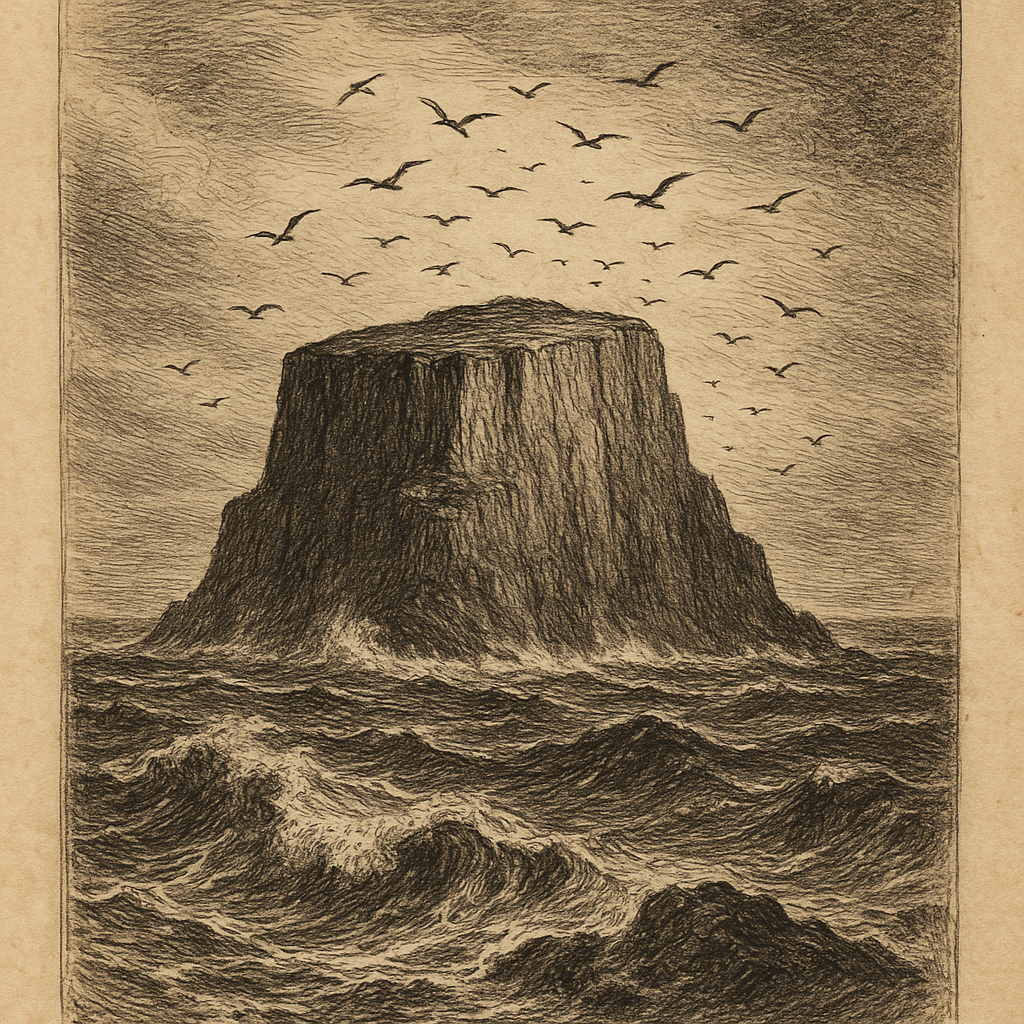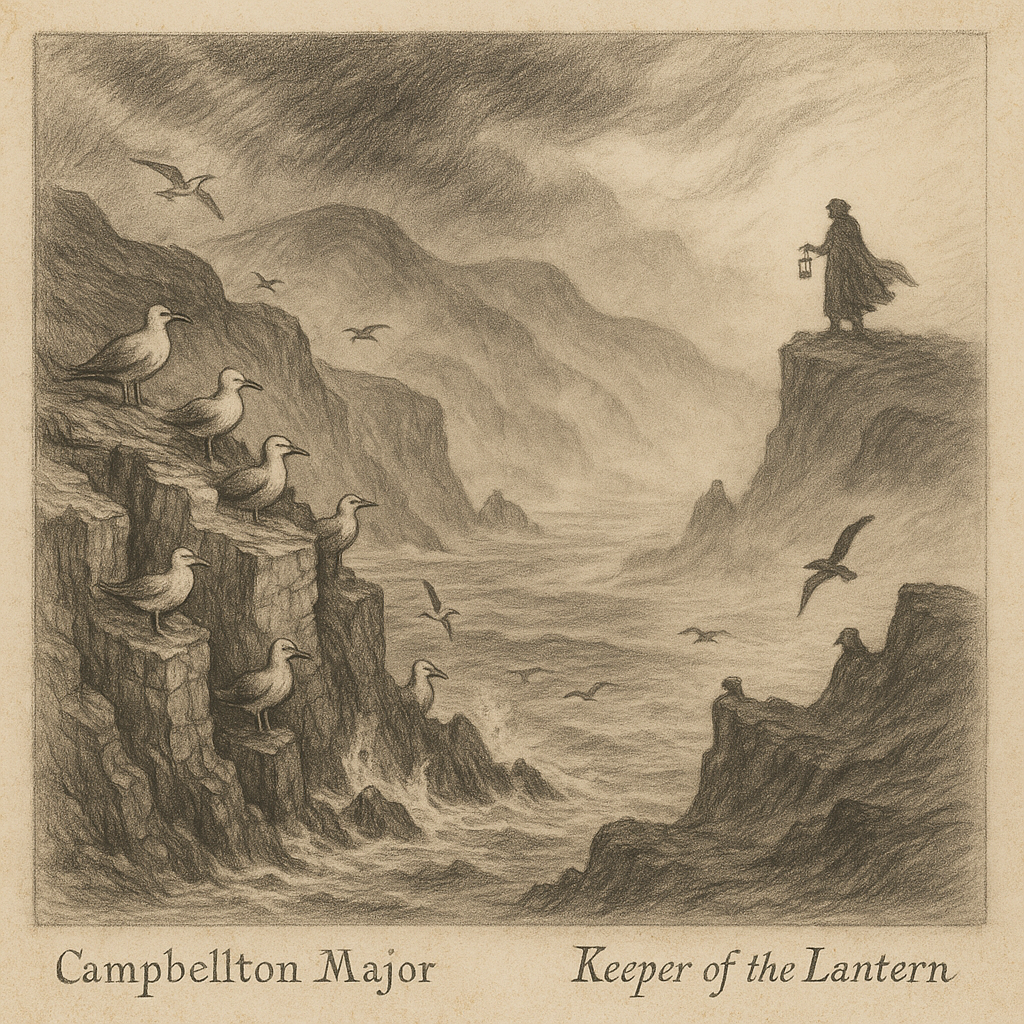Cheeseman Island: A Remote Volcanic Outpost of the South Pacific Cheeseman Island, a small and rugged outcrop in the vast expanse of the South Pacific Ocean, forms part of the Kermadec Islands group. Uninhabited and relatively unknown even among New Zealanders, this remote island is a pristine sanctuary of biodiversity and geological intrigue. Location and Geography Cheeseman Island is situated approximately 980 kilometers northeast of New Zealand’s North Island, nestled within the Kermadec Ridge — a tectonically active region of the Pacific Ring of Fire. It lies about 12 kilometers southeast of the larger Curtis Island and 80 kilometers southwest of Macauley Island. This isolated position places it in one of the most untouched marine environments on Earth. Covering just around 7.6 hectares, Cheeseman is flat-topped and steep-sided, rising abruptly from the deep ocean. Composed predominantly of volcanic rock, the island is the eroded summit of a large submarine volcano. It features exposed rock surfaces, minimal soil cover, and little vegetative growth due to high salinity and strong winds. Geological Origins Cheeseman Island, like the rest of the Kermadec Islands, is of volcanic origin. It emerged millions of years ago as part of the volcanic activity that continues to shape the Kermadec Ridge. This ridge marks the boundary where the Pacific Plate is being subducted beneath the Australian Plate, giving rise to numerous underwater and surface volcanoes. Although Cheeseman Island itself is not currently volcanically active, it sits atop a deeply complex and dynamic geological structure. Tremors and seabed shifts are common in the area, and underwater eruptions occasionally occur at nearby submarine volcanoes. Climate and Environment The island experiences a subtropical climate, characterized by relatively mild temperatures and high humidity. Rainfall is sporadic but adequate to support some resilient coastal vegetation such as mosses, lichens, and a few salt-tolerant grasses. The combination of harsh sunlight, strong winds, and ocean spray, however, makes it a challenging environment for most terrestrial life. Despite its barren appearance, Cheeseman Island plays a vital ecological role as a sanctuary for marine birds. It serves as a critical nesting site for several seabird species including sooty terns, masked boobies, and frigatebirds, which rely on the island’s isolation for undisturbed breeding. Flora and Fauna Due to its remoteness and rugged terrain, Cheeseman Island has never been permanently settled or significantly altered by human activity. As a result, it supports one of the few remaining uncontaminated ecological niches in the Pacific region. The island is free from introduced mammals such as rats or goats, making it an ideal locale for birdlife. The surrounding marine waters are part of the Kermadec Marine Reserve, one of the largest and most biodiverse marine protected areas in the world. The underwater ecosystems here are teeming with colorful corals, green sea turtles, manta rays, and a variety of shark species. Migratory whales can also be seen in the area during certain times of the year. Scientific Importance and Protection Cheeseman Island is incorporated into the Kermadec Islands Nature Reserve and World Heritage Tentative List managed by New Zealand’s Department of Conservation (DOC). Given its ecological importance and vulnerability, access to the island is restricted and granted only to scientific teams with approved research agendas. Researchers focus primarily on ornithology, marine biology, and volcanology. Their work is crucial to understanding life in extreme environments and the impacts of climate change on isolated island ecosystems. Interesting Facts – Cheeseman Island was named after Thomas Frederic Cheeseman, a 19th-century botanist and naturalist who contributed significantly to the understanding of New Zealand’s flora. – Despite its proximity to geologically active islands, Cheeseman Island has remained volcanically dormant during recorded history. – The island’s isolation has helped preserve rare organisms, including certain invertebrates and seabird species found almost nowhere else. – Weather data collected near Cheeseman Island contributes to the broader understanding of cyclonic patterns and ocean temperatures in the South Pacific. – Very few human footprints have ever touched Cheeseman’s surface, and it remains one of the planet’s most remote natural preserves. Legends and Stories While Cheeseman Island may lack a legacy of human habitation, it has inspired legends among seafarers and islanders across the South Pacific. Māori voyagers of old told tales of “Te Motu Kāore Tangata Ai” — “the island where no man stays.” According to oral tradition, the great navigator Kupe observed Cheeseman during his early explorations, noting its desolate landscape and fierce seabird colonies. A more recent maritime legend among New Zealand fishermen speaks of a “ghost ship” seen sailing near Cheeseman in heavy fog, its crew strangely silent. The story goes that anyone who strayed too close would find their compasses spinning uncontrollably, an effect later attributed to magnetic anomalies in local volcanic rocks. These tales, though unverified, add a veil of mystery to the island — enhancing its allure not just as a scientific treasure trove, but as a spiritual and mythical marker in the vast Pacific. Access and Visitation Due to its designation as a highly protected nature reserve, Cheeseman Island is off-limits to casual visitors. Special permits must be obtained from the New Zealand Department of Conservation, and these are generally issued only for scientific or conservation purposes. Even approaching the island is a considerable challenge. It can only be reached via private expeditions or chartered research vessels, usually as part of a broader survey of the Kermadec Islands. Landfall is treacherous due to steep cliffs and a lack of natural harbors. Conclusion Cheeseman Island may be small and barren at first glance, but it holds immense scientific value and ecological purity in a world increasingly disrupted by human activity. As one of the last unspoiled natural outposts in the South Pacific, it serves as a living laboratory for understanding volcanic formation, biodiversity, and the resilience of life in extreme conditions. In its solitude, Cheeseman reminds us of the fragile beauty of Earth’s most remote and least disturbed places.

Cheeseman Island
Do you like my work? Buy Me A Coffee
Do you like my work? Buy Me A Coffee
-

Cheeseman Island
Cheeseman Island: A Remote Volcanic Outpost of the South Pacific Cheeseman Island, a small and rugged outcrop in the vast expanse of the South Pacific Ocean, forms part of the Kermadec Islands group. Uninhabited and relatively unknown even among New Zealanders, this remote island is a pristine sanctuary of biodiversity and geological intrigue. Location and…
-

Campbellton Major Island
Introduction Campbellton Major Island is a remote and mysterious island located far from bustling human settlements and known for its isolation, untouched nature, and enigmatic history. It lies in the northern reaches of the Labrador Sea, off the coast of Newfoundland and Labrador, Canada. Though largely unknown to the general public, Campbellton Major Island has…
-

Hayman Island
Hayman Island: A Tropical Jewel of the Whitsundays Hayman Island is the northernmost of the Whitsunday Islands, nestled in the heart of Australia’s Great Barrier Reef. This secluded island paradise boasts not only pristine beaches and luxurious resorts, but also a rich natural history and fascinating local legends. Geographic Location and Natural Features Positioned in…
by
Tags: